Black Mold Exposure’s Michael Roland Williams and Karen Noseff talk about health, sex, and how to reach seemingly unattainable goals when you feel like you’re dying
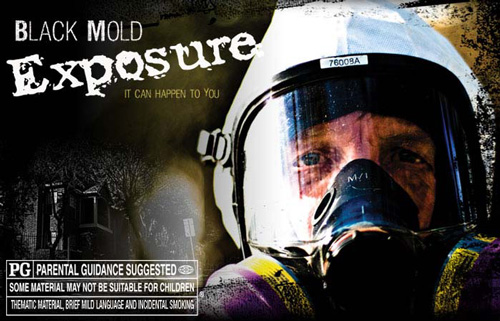
The most inspirational people are always the ones that take the crappy hand life dealt them and transform their bad luck into something larger than their own experience. Such is the case with Michael Roland Williams, producer and director of the movie Black Mold Exposure, premiering at the Landmark Magnolia Theatre in Dallas on April 21, and girlfriend Karen Noseff, one of the documentary’s main subjects.
Both became severely—and chronically—ill after being exposed to toxic black mold in their apartment several years ago. Early on, Michael decided to film the experience as it unfolded, and the result is the first-ever film to document the lives of those damaged by toxic mold. The movie follows Karen and others whose lives were derailed by mold illness, visits with some of the top physicians working in the field of mycotoxin illness today, and, as the film’s website describes, reveals how mold victims oftentimes must recover their own health single-handedly “in an atmosphere of political and social intolerance and disbelief.”
Julie Genser, founder of Planet Thrive, recently had the honor of a virtual sit-down with both Michael and Karen to discuss their mold nightmare and the long road out of it.
![]() KN: I was in the apartment for three weeks before Michael so I was already manifesting symptoms when he moved in.
KN: I was in the apartment for three weeks before Michael so I was already manifesting symptoms when he moved in.
![]() MRW: I was in the apartment about 3 months being exposed, but I was in the apartment 24 hours a day because I was working out of it. It started out with itching on my skin that became worse over time. Everything was downhill from there.
MRW: I was in the apartment about 3 months being exposed, but I was in the apartment 24 hours a day because I was working out of it. It started out with itching on my skin that became worse over time. Everything was downhill from there.
![]() KN: Yes, more or less.
KN: Yes, more or less.
![]() MRW: We left immediately upon realizing it was mold. Immediately. I walked out with the clothes on my back and got in my car and never went back. The place was that infested.
MRW: We left immediately upon realizing it was mold. Immediately. I walked out with the clothes on my back and got in my car and never went back. The place was that infested.
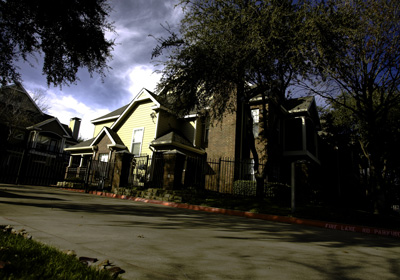
![]() MRW: Yes, we did pursue legal action, but we are under a confidentiality agreement. Legal action for personal injury is a long drawn out losing battle right now with mold in most states. Especially in a conservative state like Texas. It sucks for the people that are involved, but if you think about it from an outside perspective. We really don’t know exactly what molds, over what period of time, will do to any given person. It could cause any number of health problems and you just have a hard time proving that. It doesn’t mean it didn’t happen.
MRW: Yes, we did pursue legal action, but we are under a confidentiality agreement. Legal action for personal injury is a long drawn out losing battle right now with mold in most states. Especially in a conservative state like Texas. It sucks for the people that are involved, but if you think about it from an outside perspective. We really don’t know exactly what molds, over what period of time, will do to any given person. It could cause any number of health problems and you just have a hard time proving that. It doesn’t mean it didn’t happen.
![]() MRW: About 3 years into it I decided to produce the film. This is my first film, however, because I was a paid actor in all mediums prior to making it I wasn’t unfamiliar with filmmaking. It took 3 years to complete the film.
MRW: About 3 years into it I decided to produce the film. This is my first film, however, because I was a paid actor in all mediums prior to making it I wasn’t unfamiliar with filmmaking. It took 3 years to complete the film.
![]() MRW: It was difficult at times to get people involved, but once the production got rolling more people jumped on. It was a question of who I wanted in the film, and not if I could find anyone. There were so many stories and most of them are essentially the same story, so I wanted to find people that fit with what I was trying to do, which was make an entertaining film.
MRW: It was difficult at times to get people involved, but once the production got rolling more people jumped on. It was a question of who I wanted in the film, and not if I could find anyone. There were so many stories and most of them are essentially the same story, so I wanted to find people that fit with what I was trying to do, which was make an entertaining film.
![]() MRW: It was well planned out, but being a documentary, naturally, it unfolded as it was shot. The story was crafted and the film came together in the edit.
MRW: It was well planned out, but being a documentary, naturally, it unfolded as it was shot. The story was crafted and the film came together in the edit.
![]() MRW: I played online poker for the production of the film and I borrowed the rest for post-production.
MRW: I played online poker for the production of the film and I borrowed the rest for post-production.
![]() KN: Two years. The first 2 years were hell. One step forward, two steps back. Then finally came a breakthrough.
KN: Two years. The first 2 years were hell. One step forward, two steps back. Then finally came a breakthrough.
![]() MRW: It was so gradual that I have no idea. I’ve worked about 100 hours a week for the better part of two or three years. My life has become a blur. I don’t remember when I started to feel better. I really don’t. But it has been a very gradual process. Better late than never though.
MRW: It was so gradual that I have no idea. I’ve worked about 100 hours a week for the better part of two or three years. My life has become a blur. I don’t remember when I started to feel better. I really don’t. But it has been a very gradual process. Better late than never though.
![]() KN: Safe housing – free from chemicals/paints/pesticides – far-infrared sauna, eastern medicine, supplements, antihistamines, diet modifications, exercise, prayer. Makeup, hair products/etc that are fragrance free/organic/low-tox.
KN: Safe housing – free from chemicals/paints/pesticides – far-infrared sauna, eastern medicine, supplements, antihistamines, diet modifications, exercise, prayer. Makeup, hair products/etc that are fragrance free/organic/low-tox.
![]() MRW: I could write a book on this as well. Exercise, drink water, eat healthy, have sex, pray. Not necessarily in that particular order. (laughs) Seriously though, you should be doing all those things that you should’ve been doing before but you weren’t, and then assess your problems and go find the answers. There isn’t one way out of this, but you have to make sure the basics are covered with nutrient levels, exercise, hydration, hormone levels, etc. Exercise does so much for the body on so many levels that it’s insane not to exercise and wonder why you aren’t feeling well. If you can only raise your arms, then raise your arms once today. Raise your arms twice tomorrow. At the end of the year you’ll be raising your arms 365 times a day.
MRW: I could write a book on this as well. Exercise, drink water, eat healthy, have sex, pray. Not necessarily in that particular order. (laughs) Seriously though, you should be doing all those things that you should’ve been doing before but you weren’t, and then assess your problems and go find the answers. There isn’t one way out of this, but you have to make sure the basics are covered with nutrient levels, exercise, hydration, hormone levels, etc. Exercise does so much for the body on so many levels that it’s insane not to exercise and wonder why you aren’t feeling well. If you can only raise your arms, then raise your arms once today. Raise your arms twice tomorrow. At the end of the year you’ll be raising your arms 365 times a day.
![]() MRW: One incessant problem we had is that the a/c and heat from cars and buildings burned our face everywhere we went, and in Texas the a/c or heat is running year round everywhere.
MRW: One incessant problem we had is that the a/c and heat from cars and buildings burned our face everywhere we went, and in Texas the a/c or heat is running year round everywhere.
![]() KN: Loosing 80% of what I had accumulated up to age 25 and loosing my health at the same time. People not believing that I was sick.
KN: Loosing 80% of what I had accumulated up to age 25 and loosing my health at the same time. People not believing that I was sick.
![]() KN: I am. 90%. I can tolerate perfume on people as long as I can go home and recover while I sleep. I still react but at a tolerable (“normal allergy reaction” level) and not a debilitating “please shoot me now” level.
KN: I am. 90%. I can tolerate perfume on people as long as I can go home and recover while I sleep. I still react but at a tolerable (“normal allergy reaction” level) and not a debilitating “please shoot me now” level.
![]() MRW: I’ve still had problems, but I’m much better and I’m getting better exponentially every day. I don’t have severe situations anymore, but I do have bad days occasionally.
MRW: I’ve still had problems, but I’m much better and I’m getting better exponentially every day. I don’t have severe situations anymore, but I do have bad days occasionally.
![]() MRW: Take sole responsibility for your health. I see a lot of people blaming others. Stop blaming others and educate yourself. Never stop learning and never give up. I’m not going to stop until I’m completely whole, and I believe that I’m going to achieve that.
MRW: Take sole responsibility for your health. I see a lot of people blaming others. Stop blaming others and educate yourself. Never stop learning and never give up. I’m not going to stop until I’m completely whole, and I believe that I’m going to achieve that.
![]() KN: Don’t feel sorry for yourself. It’s already happened. Manage it and move on. You will get well if you expect to get well and accept nothing less. Don’t go to traditional doctors—they cannot and will not help you. Read books and educate yourself. You can self treat a lot of the problems.
KN: Don’t feel sorry for yourself. It’s already happened. Manage it and move on. You will get well if you expect to get well and accept nothing less. Don’t go to traditional doctors—they cannot and will not help you. Read books and educate yourself. You can self treat a lot of the problems.
![]() KN: Prayer. Emotional support from each other—that’s it. No one else really understood what was going on or really had any time or tolerance for it.
KN: Prayer. Emotional support from each other—that’s it. No one else really understood what was going on or really had any time or tolerance for it.
![]() KN: I did not connect with any other mold victims. I only had Michael.
KN: I did not connect with any other mold victims. I only had Michael.
![]() KN: My long term goals are not affected. But I have forever changed my lifestyle. I will never use unsafe products in my home or on my body.
KN: My long term goals are not affected. But I have forever changed my lifestyle. I will never use unsafe products in my home or on my body.
![]() KN: Absolutely. Everyday.
KN: Absolutely. Everyday.
![]() KN: I suggest Tony Robbins’ programs, which help you to compartmentalize different major areas of your life into manageable parts, write down your goals, and create a massive action plan. That’s what I did. His system works well for me and should work well for anyone willing to put the time into it. I also used prayer and meditation daily.
KN: I suggest Tony Robbins’ programs, which help you to compartmentalize different major areas of your life into manageable parts, write down your goals, and create a massive action plan. That’s what I did. His system works well for me and should work well for anyone willing to put the time into it. I also used prayer and meditation daily.
![]() KN: I have a completely new social circle. There are some people from the past that I still stay connected with but those are few. I have eliminated toxic-relationships. I don’t seek the old people out. If they find me, fine. I don’t make the effort.
KN: I have a completely new social circle. There are some people from the past that I still stay connected with but those are few. I have eliminated toxic-relationships. I don’t seek the old people out. If they find me, fine. I don’t make the effort.
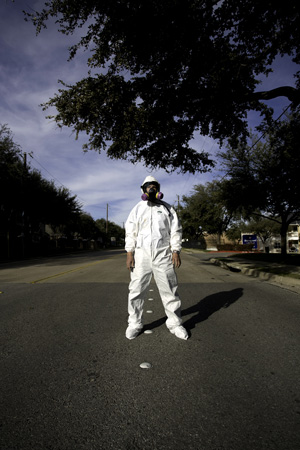
![]() KN: The truth is, [most] people don’t want to hear this…90% of them. They want to live in their box and use the unsafe products that they think are safe just because the FDA approved them or they are on store shelves. It’s not my place to educate them. And I have too many things that I want to accomplish to have time to attempt to educate someone that is most likely going to laugh at me. If someone asks me out of curiosity or asks for my help, then of course. Otherwise, no.
KN: The truth is, [most] people don’t want to hear this…90% of them. They want to live in their box and use the unsafe products that they think are safe just because the FDA approved them or they are on store shelves. It’s not my place to educate them. And I have too many things that I want to accomplish to have time to attempt to educate someone that is most likely going to laugh at me. If someone asks me out of curiosity or asks for my help, then of course. Otherwise, no.
![]() KN: The Nepal Project was started by my business partner Abi Ferrin and it made sense to continue forward with it when we formed an alliance. DIFFA is a given since it is specific to my industry and local to Dallas. I do not support DIFFA monetarily (I do the others) however I contribute my time and services. I will consider a charity that benefits mold victims, but to be honest, the reason I am involved in my existing charities is because food is a basic necessity to survival and the organizations I support provide food to impoverished children and the elderly in third world countries. Not that mold victims do not suffer severely, but they are not going to die tomorrow because they didn’t get their bowl of rice soup from their sponsor…you get what I’m trying to say…I cannot tolerate the fact that there are starving children and old people. They need help. Now. Above and beyond anyone else. But yes, a mold charity is next.
KN: The Nepal Project was started by my business partner Abi Ferrin and it made sense to continue forward with it when we formed an alliance. DIFFA is a given since it is specific to my industry and local to Dallas. I do not support DIFFA monetarily (I do the others) however I contribute my time and services. I will consider a charity that benefits mold victims, but to be honest, the reason I am involved in my existing charities is because food is a basic necessity to survival and the organizations I support provide food to impoverished children and the elderly in third world countries. Not that mold victims do not suffer severely, but they are not going to die tomorrow because they didn’t get their bowl of rice soup from their sponsor…you get what I’m trying to say…I cannot tolerate the fact that there are starving children and old people. They need help. Now. Above and beyond anyone else. But yes, a mold charity is next.
![]() MRW: There were so many obstacles that there is no way I can remember all of them. Everyday was a day of problem solving. I’m trying to think of one right now and I can’t. Making a movie is such a colossal undertaking.
MRW: There were so many obstacles that there is no way I can remember all of them. Everyday was a day of problem solving. I’m trying to think of one right now and I can’t. Making a movie is such a colossal undertaking.
![]() MRW: Well, once I started, I wasn’t going to stop until it was complete. I’m a very stubborn and determined person.
MRW: Well, once I started, I wasn’t going to stop until it was complete. I’m a very stubborn and determined person.
![]() MRW: My goal was to make an entertaining and enlightening film.
MRW: My goal was to make an entertaining and enlightening film.
![]() MRW: That’s a difficult question to answer. There were so many super low points that it’s just a blur of living hell. High points. I can’t say there are any.
MRW: That’s a difficult question to answer. There were so many super low points that it’s just a blur of living hell. High points. I can’t say there are any.
![]() KN: For me the lowest point was having friends and family turn their backs on me/mock me/not want to understand. The highest: Actually starting to recover; knowing that the antigen injections were working.
KN: For me the lowest point was having friends and family turn their backs on me/mock me/not want to understand. The highest: Actually starting to recover; knowing that the antigen injections were working.
![]() KN: Stop worrying about what other people think about you—what matters is what you think about yourself. Stop living your life to please others—please yourself. Stop living in the box. Get out of the box. Be sympathetic towards others’ plights. Give people the benefit of the doubt even if you don’t understand them. You are not them so don’t judge them. Live life fearlessly and as if each day was your last. Learn to discern real friends.
KN: Stop worrying about what other people think about you—what matters is what you think about yourself. Stop living your life to please others—please yourself. Stop living in the box. Get out of the box. Be sympathetic towards others’ plights. Give people the benefit of the doubt even if you don’t understand them. You are not them so don’t judge them. Live life fearlessly and as if each day was your last. Learn to discern real friends.
![]() MRW: Prior to the mold thing I was already a very philosophical and spiritual person. Did I come out with a whole new outlook? No. I was already way out of the box before we became ill. I see a lot of mold victims who are so angry. You gotta let that go, it has no use. I was never angry from this. Life isn’t fair, but if you can wake up and go to sleep each day knowing that you’ve done the best that you can do, and I mean truly done the best you can do, not make up rationalizations or self-lies as to why things aren’t going your way. If you can do that everyday, then that’s all you can do.
MRW: Prior to the mold thing I was already a very philosophical and spiritual person. Did I come out with a whole new outlook? No. I was already way out of the box before we became ill. I see a lot of mold victims who are so angry. You gotta let that go, it has no use. I was never angry from this. Life isn’t fair, but if you can wake up and go to sleep each day knowing that you’ve done the best that you can do, and I mean truly done the best you can do, not make up rationalizations or self-lies as to why things aren’t going your way. If you can do that everyday, then that’s all you can do.
![]() KN: To rule the world. Just kidding. But not really… :-) I’m writing a book and focusing on my company and music.
KN: To rule the world. Just kidding. But not really… :-) I’m writing a book and focusing on my company and music.
![]() MRW: I plan on continuing with producing, writing, directing, and acting in films. That’s what I love! My mold story is the film. Unfortunately, I believe that it’s going to take many years for people to understand the severity of the hazard of mold in a contained environment.
MRW: I plan on continuing with producing, writing, directing, and acting in films. That’s what I love! My mold story is the film. Unfortunately, I believe that it’s going to take many years for people to understand the severity of the hazard of mold in a contained environment.
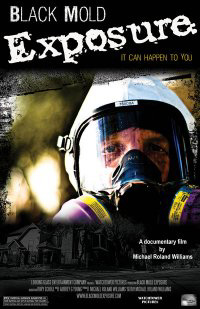 Screenings for Black Mold Exposure will be held April 21/22 in Dallas, TX, April 28 in Austin, TX, May 12 in San Diego, CA, May 14 in Boston, MA, May 19 in Seattle, WA, May 26 in Houston, TX, and June 16 in Chicago, IL. Additional screenings may be added—see blackmoldexposuremovie.com for updates to the schedule. The DVD* will be available 3 or 4 months after the theatrical release.
Screenings for Black Mold Exposure will be held April 21/22 in Dallas, TX, April 28 in Austin, TX, May 12 in San Diego, CA, May 14 in Boston, MA, May 19 in Seattle, WA, May 26 in Houston, TX, and June 16 in Chicago, IL. Additional screenings may be added—see blackmoldexposuremovie.com for updates to the schedule. The DVD* will be available 3 or 4 months after the theatrical release.
*50% of DVD sales will be donated to re|shelter when purchased through this link
photo credits: © Looking Glass Entertainment Company
 Julie Genser is a survivor of mercury and arsenic poisoning, chemical injury, mold-related illness, and lyme disease. She is the founder and director of PlanetThrive.com, a grassroots community for personal wellness that aims to empower others healing from environmental illnesses with the information, resources, and support necessary to create change in their world.
Julie Genser is a survivor of mercury and arsenic poisoning, chemical injury, mold-related illness, and lyme disease. She is the founder and director of PlanetThrive.com, a grassroots community for personal wellness that aims to empower others healing from environmental illnesses with the information, resources, and support necessary to create change in their world.






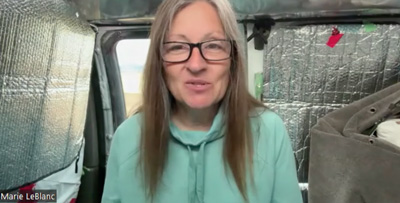
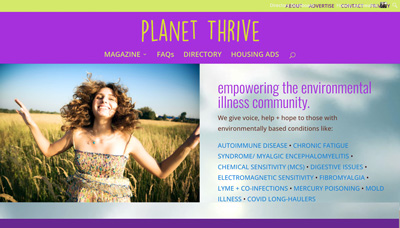
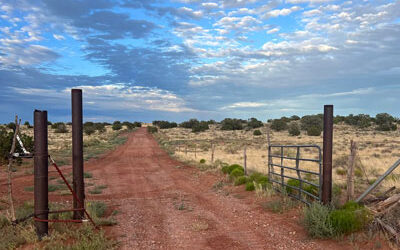
I am sad I have not seen this documentary yet. It sounds wonderful. :) Linda
Having been a fellow filmmaker and toxic black mold survivor, this interview really struck a chord with me. I can deeply relate to what this couple went through. Thank you so much for conducting the interview and thank you to Michael and Karen for sharing their experience and for making the film. Planet Thrive is the only MCS website I’ve found that focuses on the solutions, and that is such a gift. Thanks ,
Dylan
What year is this from? The website link doesn’t seem to be correct…
Thanks for the great interview. I’m sending this to family and friends who want to understand more about what we’re going through.
It looks like the correct link to the website should be:
http://blackmoldexposure.com/
(leave off the “movie” part after “exposure”)